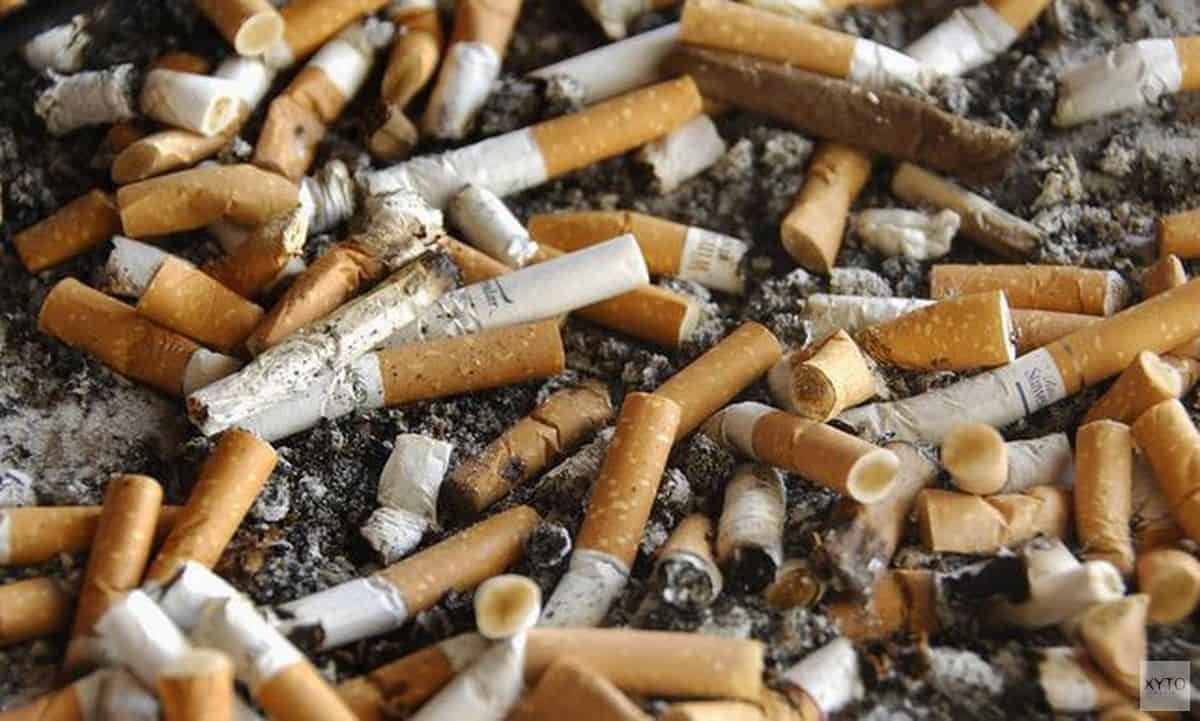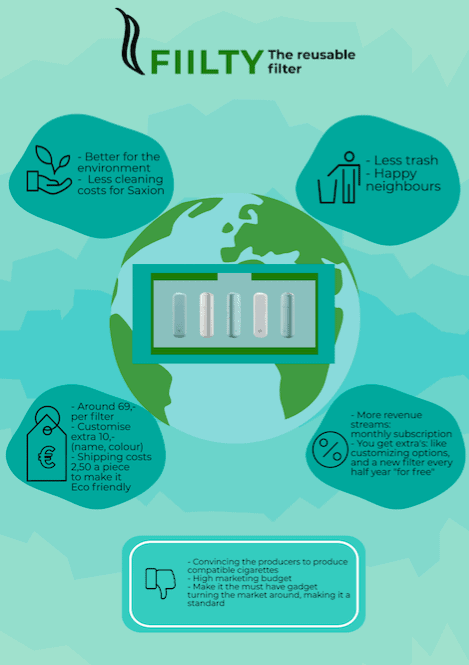Overlast van rokers in wijken
Saxion Hogeschool, ROC van Twente,
Gemeente Enschede
Hoe kunnen we de overlast van rokers in wijken, gelegen rond terreinen van onderwijsinstellingen, beperken? Dat is een vraag die langzamerhand doordringt, nu het rookverbod op (onder andere) schoolpleinen gehandhaafd wordt. Mensen die daar niet langer mogen roken trekken de wijk in of zoeken andere plekjes. Soms met overlast als gevolg: van afval, geur, geluid of anderszins. Zonder weer met een zoveelste stoppen-met-roken campagne te komen of almaar in te zetten op handhaving: wat voor producten of concepten kunnen we ontwerpen waarmee we overlast kunnen beperken?
Over deze challenge

Saxion Hogeschool (onder andere)
j.a.buld-blok@saxion.nl
Bij de tweede nano-challenge die we hebben georganiseerd concentreerden we ons op dit vraagstuk.
Vier gemengde groepen studenten hebben gewerkt aan oplossingsrichtingen, volgens het programma dat we hier beschrijven. Hun presentaties kun je hieronder terugzien.
Nog niet alle oplossingen zijn helemaal uitgewerkt, en sommige vragen nader onderzoek. Dat maakt ze bij uitstek geschikt voor een vervolg.
Wil je ermee aan de slag? Doe dan navraag bij de challengepartner of neem contact op met het EnschedeLAB.
Voortgang / resultaten
Tijdens nano-challenge #2 werkten er vier teams aan het vraagstuk hoe overlast van rokers in Enschede wijken verminderd kan worden. De vier oplossingen die daarvoor werden bedacht zie je hieronder.
Team 1 bedacht dat rokers het weren van rokers van een locatie niet helpt tegen de overlast en het kernprobleem niet aanpakt. Door middel van een motiverende 30-dagen challenge willen zij rokers helpen stoppen met roken. Aan de hand van een kraskaart krijgen deelnemers motiverende teksten en feiten en maken ze kans om leuke prijzen, van ondernemers in Enschede, te winnen, voor elke dag dat ze niet roken.
Team 2 gaf de voorkeur aan het opruimen van door rokers veroorzaakt afval. Door middel van MEUK, een slimme afvalbak die sigarettenpeuken vind en opruimt, hoopt team 2 overlast van rokers te minimaliseren. MEUK vraagt voorbijgangers ook om hun sigarettenpeuken in de afvalbak te deponeren. Zo blijft de omgeving mooi schoon. Hieronder zie je de presentatie en pitch van team 2.
Team 3 bedacht een speciale rokerscabine. De cabines zullen worden geplaatst rondom het Saxion pand om zo de overlast in de wijken rondom de hogeschool te verminderen. Met een groen dak, zonnepanelen en hometrainers leveren de cabines een positieve bijdrage aan het verminderen van overlast. Rokers kunnen vijf minuten fietsen en een muntje ontvangen voor een kop koffie, en wanneer je je sigarettenpeuk weggooit krijg je een stukje kauwgum. Hoe het werkt? Dat zie je hieronder.
Team 4 ging op de ecologische kant op met Filty, een herbruikbaar sigaret filter. Door de sigarettenfilter herbruikbaar te maken, zal er minder afval worden gegenereerd, wat leidt tot minder overlast. Hieronder zie je de oplossing die team 4 bedacht.

Vervolg
De kraskaart – oplossing van team 1 – is nagenoeg kant-en-klaar om uit te proberen. Wil je dat eens proberen? Bijvoorbeeld in het kader van het ontwikkelen van een campagne? Feel free!
MEUK, de filterrobot, is alleen nog maar een concept. Deze ontwikkelen naar een prototype, wellicht in combinatie met drong-technologie, kan een vervolgstap zijn.
Bij de oplossingen van team 3 en 4 is de vraag of deze het roken zelf niet te veel aanmoedigen. Over de haalbaarheid van een cabine werden vragen gesteld, net als over het herbruikbare filter.
Over die laatste oplossing dacht ook het Honours Programma van de UT na. Zij zagen nadelen in hoge kosten voor productie, het stimuleren van roken en het verbod op sigaretten met een smaakje. Eventuele doorontwikkeling van deze oplossing zou zich moeten richten op de vraag hoe je een dergelijke (afbreekbare) oplossing aan kunt bieden zonder daarmee roken te populariseren.
MAAK DEEL UIT
VAN HET ENSCHEDELAB
